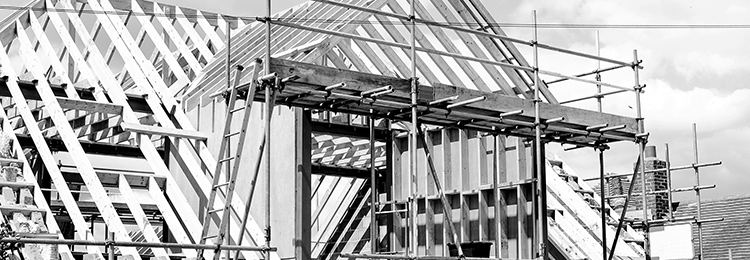When an injury occurs on the job-site, your team will likely spring into action. It’s important that you have established where your team members should seek medical attention so they act in the best way possible. The biggest decision is whether to go to an emergency room or an urgent care facility.
Not every injury requires the same response. When workers see signs of a life-or-death situation, such as excessive bleeding, a severed limb, or a head injury, they should choose the emergency room. However, for a variety of reasons, the urgent care facility is often better equipped to handle injured construction workers.
Three industry experts from Builders Mutual – Risk Management expert Sean Purcell, Senior Claims Adjuster Wendy Maunu, and Director of Claims Tina Hill – discuss emergency rooms and urgent care facilities. They have established five tips for receiving the best service.
1.Know your locations and wait times.
Whenever you begin a new project, take the time to identify the locations of your closest emergency room and urgent care facility. Policyholders are encouraged to reach out to the Builders Mutual claims department before beginning work in an unfamiliar area. We are happy to help identify the best locations.
Even if the nearest urgent care facility is farther away than the emergency room, remember that wait time at an urgent care facility is usually about 30 minutes while it can be up to four hours or more at an ER.
2. Establish a relationship before an accident.
Emergency rooms will not honor recommendations or have any type of pre-injury agreement with an employer. However, you do have this opportunity with urgent care facilities.
Before you need them, reach out and establish a relationship with the staff at your nearest urgent care. Build a rapport ahead of time by introducing yourself and letting them know what your insurance carrier will require in the event of an accident on your job-site.
Plan ahead for urgent care visits by establishing a list of action items to communicate with your urgent care staff:
- Ask your urgent care staff to administer a post-accident drug test
- Ask your urgent care staff to fax medical notes to you
- Provide the Builders Mutual claims mailing address so bills can be routed correctly
- Decide how to accommodate return-to-work restrictions or light-duty work
Once an accident has occurred, reach out to the urgent care staff and make sure they know you are sending one of your workers. Remind them at this time of the processes you have set in place.
3. Ensure you obtain a post-accident drug test.
Post-accident drug testing is one of the main reasons you should know the difference between ER and urgent care service. For your employee’s insurance claim, it is important to have this test conducted within 24 hours of the accident. If an employee gets hurt while under the influence, their workers’ compensation claim may be denied.
At emergency rooms, it is more difficult to get a post-accident drug test, and employers can lose out on the opportunity to get the test done within the 24-hour period. Hospitals do not routinely perform post-accident drug tests – so you must specifically ask for the test. Send a company representative with the injured employee going to the ER. If ER staff will not perform the test, the representative can go with the injured employee to an urgent care to have the test completed.
At an urgent care, you can have on file a request that you need the test done no matter what.
4. Understand the post-accident treatment and referral process.
An urgent care facility may refer the injured employee to a specialist for further treatment. An urgent care clinic communicates this information to the employer and insurance company quickly, which expedites treatment and ensures proper care.
In contrast, the emergency room typically recommends that the injured employee follows up with a physician. This can lead to frustration for the employee because there isn’t a clear or definite next step. Often, the insurance company doesn’t get a record of this recommendation in a timely fashion, which can lead to delayed treatment.
5. Exchange the necessary information for billing and claims.
Emergency rooms and urgent care facilities will all take workers’ compensation insurance. However, emergency rooms typically have less experience dealing with workers’ comp situations and tend to be less cooperative with employer requests.
The biggest challenge with ER care is that hospitals bill patients directly. This may cause unnecessary stress for the injured employee and adversely impact the employee’s credit. Sending a company representative can ensure that the ER has the correct billing information for the workers’ compensation claim so that the employee is not directly billed. Urgent care facilities know that injured employees are not responsible for charges and rarely, if ever, bill an employee directly.
The billing rates also differ based on care provider. At hospital emergency rooms, patients may get charged for tests (facility charges), but they also get billed separately by the on-call physician who sees the patient. Urgent care bills are based on the procedure performed, which streamlines the billing process and expedites the claim.
Recently, free-standing emergency facilities have caused confusion for people seeking medical care. To many people, these facilities appear to be urgent care facilities, but they operate – and bill – like hospital emergency rooms. These facilities are being built in many areas, and people are getting surprised by their billing practices. When you locate your nearest ER and urgent care locations, be sure to double-check and make sure you are not identifying a free-standing emergency facility.
Prepare your plan.
By following these tips, you can prepare in advance for job-site injuries and confidently direct your injured employees to the best care for their needs. Make sure that your team understands these differences as a part of an overall injury plan. As a result, your team members will be back to work as quickly as possible.




 Find an
Find an